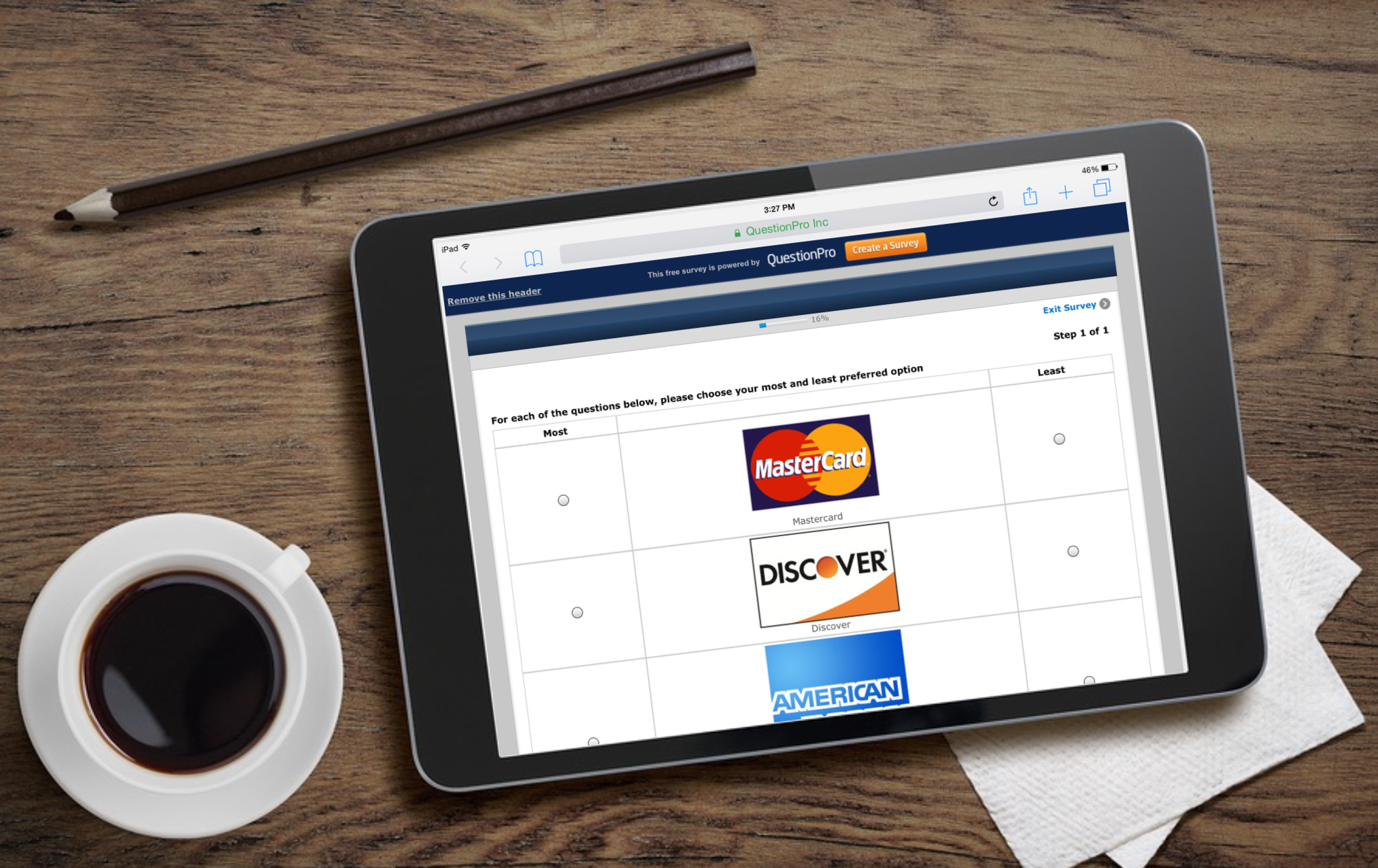
Next week QuestionPro is doing a webinar – A Beginners Guide to MaxDiff Scaling , and that is when I will review, in non-technical terms, how MaxDiff works, why it is superior to rating scales and what business questions it can answer.
What is MaxDiff?
Maximum Difference Scaling (MaxDiff) is a way of evaluating the importance (or preference) of a number of alternatives. It is a discrete choice technique: respondents are asked to make simple best/worst choices. It has the advantage that it is very simple for the respondent but gives extremely rich information to the researcher.
MaxDiff analysis can be used in new product features research or even market segmentation research to get accurate orderings of the most important product features. Discriminate among feature strengths more effectively than derived importance methodologies. Like other trade-off analyses, the analysis derives utilities for each of the most important product features which can be used to derive optimal products, using market segmentation to put respondents into groups with similar preference structures, or to prioritize strategic product goals.
You can have your respondents perform Forced-choice nature of the tasks, and disentangle the relative feature importance in cases where average Likert-style ratings might all have very similar ratings.
To learn more about MaxDiff – Register for the upcoming webinar, and join the webinar on Wednesday, April 27th, 11am PST.
Paul Richard McCullough
Richard’s areas of expertise include applied quantitative methods in new products research, pricing strategy, market segmentation and brand positioning. He has been published more than 40 times in numerous magazines and journals. He regularly presents papers on topics in advanced statistical methods at leading conferences throughout North America. Richard has also worked for many years on the client side for companies such as Levi Strauss & Company and Pacific Gas and Electric Company.







